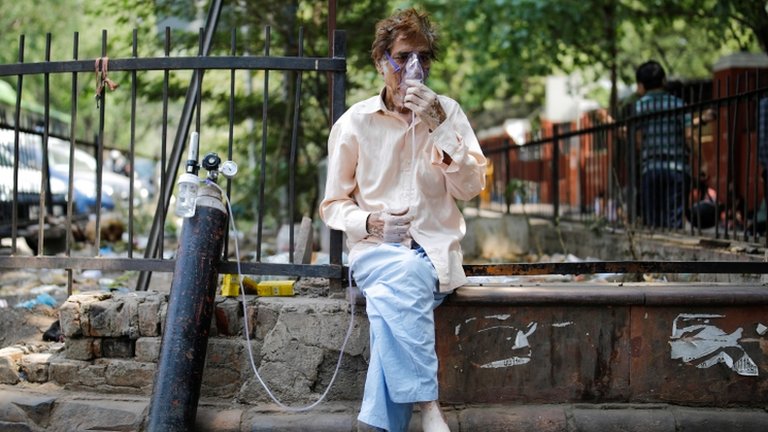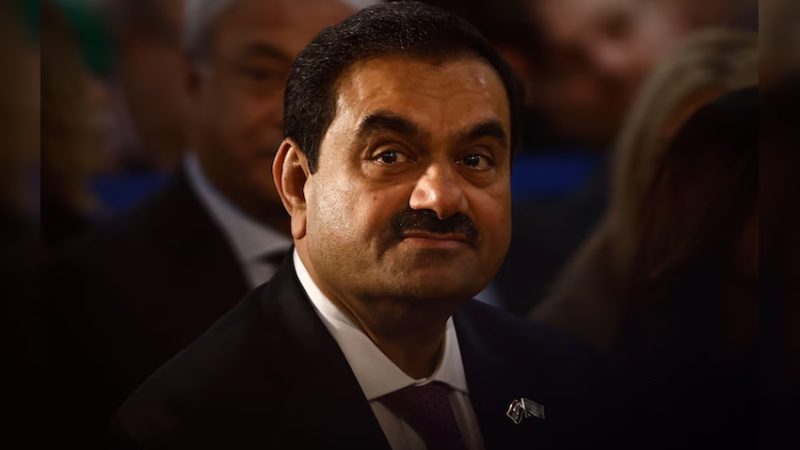India’s Covid ‘tsunami’ as hospitals run out of oxygen and people die in street

Overwhelmed hospitals in India begged for oxygen supplies while coronavirus patients died in the streets.
The country’s coronavirus infections soared again overnight on Friday in a “tsunami” of disease set a new world record for cases for the third consecutive day.

Max Healthcare, which runs a network of hospitals in north India, tweeted that it had less than two hours of oxygen left while Fortis Healthcare, another big chain, said it was suspending new admissions in Delhi.
“We are running on backup, waiting for supplies since morning,” Fortis said.
India is in the grip of a rampaging second wave of the pandemic, hitting a rate of one Covid-19 death in just under every four minutes in Delhi as the capital’s underfunded health system buckles.
The government has deployed military planes and trains to get oxygen to Delhi from the far corners of the country and overseas including Singapore.
The number of cases across the country of around 1.3 billion rose overnight by 346,786, the Health Ministry said, for a total of 16.6 million cases, including 189,544 deaths.
Deaths rose by 2,624 over the past 24 hours, the highest daily rate for the country so far.
Crematoriums across Delhi said they were full up and asked grieving families to wait.

Hospitals in Delhi have gone to the city’s high court this week seeking it to order the state and federal governments to make emergency arrangements for medical supplies, mainly oxygen.
“It’s a tsunami. How are we trying to build capacity?” the Delhi high court asked the state and federal governments in response to this plea.
“Almost every hospital is on the edge. If oxygen runs out, there is no leeway for many patients,” Dr Sumit Ray told the BBC.
“Within minutes, they will die. You can see these patients: they’re on ventilators, they require high-flow oxygen. If the oxygen stops, most of them will die.”
Television showed families tending to the sick in hospital corridors and streets as they waited for medical attention.
Shayam Narayan’s brothers had hauled him from a rickshaw onto a hospital trolley in New Delhi.
Only a few minutes pass before they were told that he is already dead.
His brothers had first brought him to the hospital at 6 a.m. on Friday, but they said staff deemed him well enough to return home.
Ten hours later, his condition deteriorating, they came back. But it was too late to save him.
“The system is broken,” his younger brother Raj said.
Narayan, who had five children, died without being admitted to the hospital, or taken to its morgue, meaning his death is unlikely to be officially counted in the city’s rising toll.
One man identified as Amit who was grieving for his brother at Delhi’s Jaipur Golden hospital said he had seen families running around with oxygen cylinders trying to get them refilled.
“You can’t leave me in the lurch,” a lawyer appearing for the Jaipur Golden hospital told the high court on Saturday, seeking its intervention.
The court asked the government to ensure supplies, as well to make security arrangements for medical centres amid people’s desperation.
“We know how people react, let’s not have a law and order situation,” the court said in its direction to the authorities.
India surpassed the U.S. record of 297,430 single-day infections anywhere in the world on Thursday, making it the global epicentre of a pandemic that is waning in many other countries.
The federal government had declared it had beaten back the coronavirus in February.
Health experts said India became complacent in the winter, when new cases were running at about 10,000 a day and seemed to be under control.
Authorities lifted restrictions, allowing for the resumption of big gatherings.
Others said that it could also be a more dangerous variant of the virus coursing through India. It is the world’s second most populous country and people live in close proximity, often six to a room.







